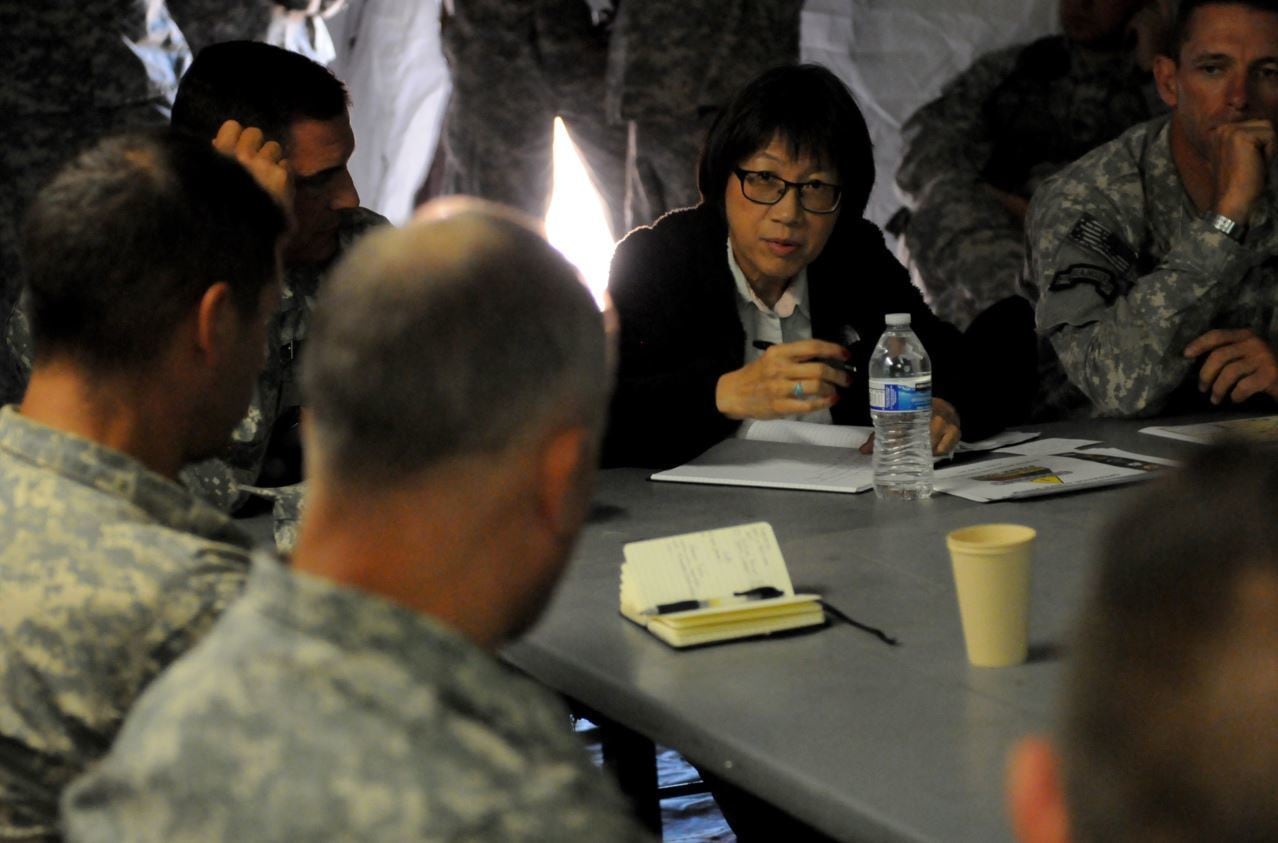WASHINGTON — The Pentagon is seeking $377 million over five years to fund high-profile rapid experimentation projects, including initial efforts to close capability gaps in support of the Joint Warfighting Concept and improve Joint All Domain Operations in U.S. Indo-Pacific Command, budget details released Tuesday show.
The defense-wide request includes $70 million for the Rapid Defense Experimentation Reserve in fiscal 2023, $48.5 million of which would support JWC experiments in the areas of command and control, information advantage, contested logistics and advanced fires.
“This will provide funding for certain individual capability experiments and experimentation series that support capabilities to enable the JWC supporting concepts, also known as the ‘functional battles,’” according to the budget documents.
Heidi Shyu, undersecretary of defense for research and engineering, has hyped RDER as a mechanism for addressing critical capability gaps across the Department of Defense, though she’s offered few details about what projects RDER will fund. Last year, her team received more than 200 proposals from the military services and selected 32 to execute as part of its initial sprint.
Speaking during an April 20 National Defense Industrial Association webinar, Shyu said the department is working to identify its second slate of RDER projects, noting that the process is open to industry as well as federally funded research and development centers.
Shyu’s office released its detailed budget request for defense-wide research and development programs April 26, offering more insight on early RDER efforts. Along with the defense-wide request, RDER projects are embedded within the services’ funding plans. It’s not immediately clear how much funding each service has received through RDER, but it’s likely the overall number is significantly higher than what is laid out in the defense-wide request.
The documents don’t say how many JWC experiments will occur in fiscal 2023. The Air Force’s budget includes $64 million for four RDER projects tied to the JWC experimentation sprint. Three of the projects will mature sensing and electromagnetic spectrum prototypes, commercial space integration software and advanced satellite communication terminals. The fourth effort is classified.
Of the remaining funding request, $2.5 million would fund one or more experimentation sprints in INDOPACOM. According to Army budget documents, the funding is linked to an effort the service proposed for RDER called Olympus, which would mature capabilities for Joint All Domain Operations, including advanced sensing, target identification and command and control. The service’s budget request includes $86 million for the Olympus project.
“The Olympus portfolio will initiate prototyping, integration and risk-reduction activities to facilitate integrated and interoperable capabilities that leverage layered [intelligence, surveillance and reconnaissance] and autonomy with advanced communication and architectures to enable AI-infused analytics and layered effects,” the Army’s documents state.
The request also includes $10 million to establish a RDER coordination and execution cell. The cell will include planners embedded within the combatant commands to report on results and lessons learned and work with the military services to transition capabilities into programs of record.
Another $9 million would provide intelligence and end-to-end analysis support to ensure that RDER capabilities explored during experimentation sprints are informed by near-peer threats and are aligned with the Joint Warfighting Concept.
Beyond fiscal 2023, RDER’s proposed defense-wide funding profile shows a slow-but-steady increase, rising to $71 million in fiscal 2024, $75 million in fiscal 2025, $79 million in fiscal 2026 and $82 million in fiscal 2027.
Courtney Albon is C4ISRNET’s space and emerging technology reporter. She has covered the U.S. military since 2012, with a focus on the Air Force and Space Force. She has reported on some of the Defense Department’s most significant acquisition, budget and policy challenges.








